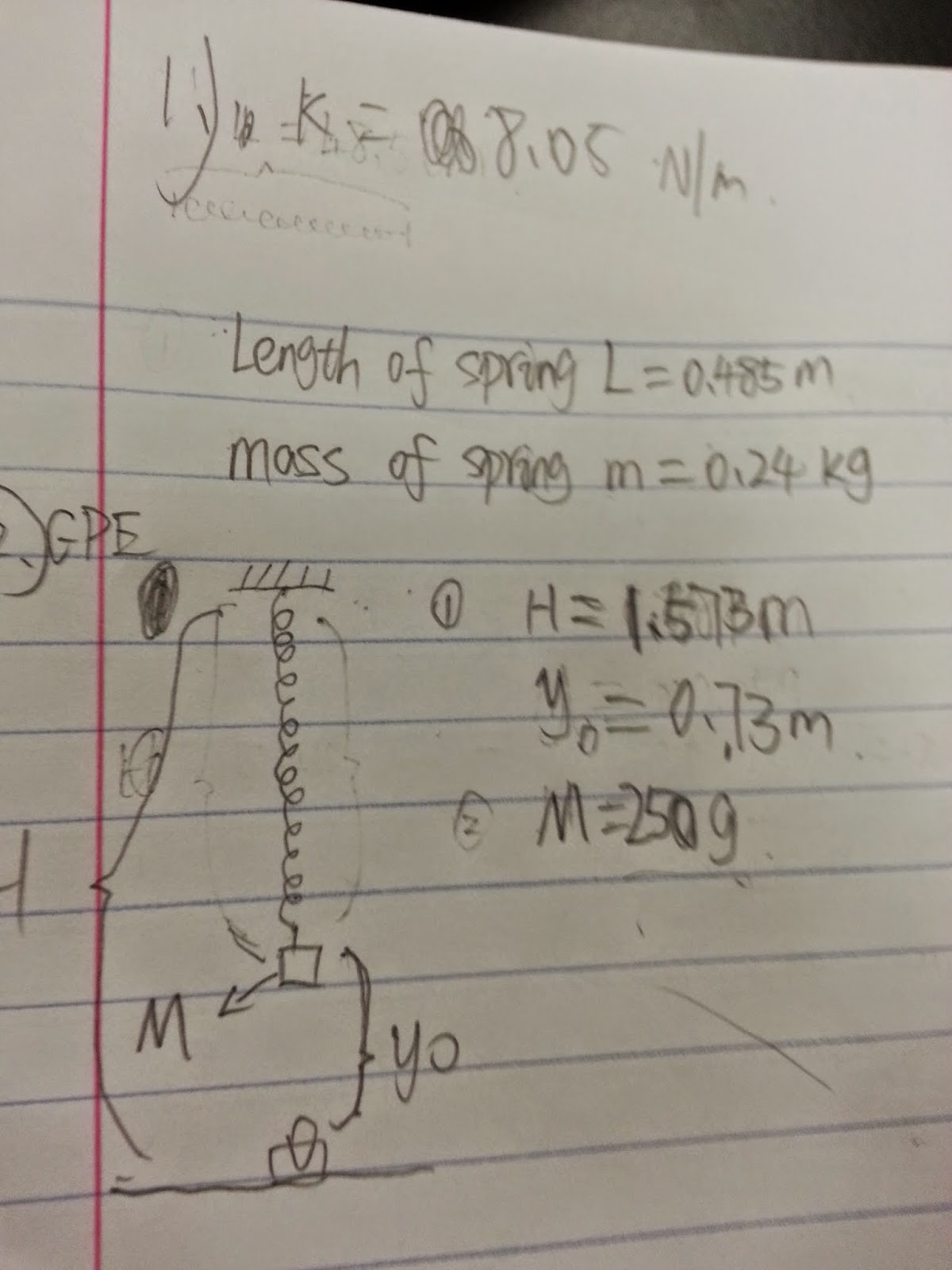Lab 11
Purpose: For this lab we want to show that a hanging spring with mass obey the conservation of energy.
 We will be looking at the energy in a vertially-oscillating mass-spring system, where the spring has non-negligible mass.
We will be looking at the energy in a vertially-oscillating mass-spring system, where the spring has non-negligible mass.
To prove all energy is conserve, first is to find out what Potential energy and GPE of this spring.
Because the spring has mass, so function of PE and GPE will be not same like usual. Then the first part is to find out the new function
Because the spring has mass, so function of PE and GPE will be not same like usual. Then the first part is to find out the new function
How do to find the that.
1. Choosing a representation piece dm of the pring. dm = M/(H-y0)*dy
2. Write a expression for the GPE of that piece GPE
dm*g*y= M/(H-y0)dy*g*y.
3. Sum GPE of all of pieces of spring from y= y0 to y =H .
Then by using calculation, GPE can be written as m,spring/2* g *H + m,spring/2*g*y
Using the same method, we got KE
so that we got KE = 1/6 * m,spring * v^2
After find out the KE and GPE of this spring, then experiment can be done now.
Experiment one.
This experiment is to find out the spring constant.
Set up all equipment like this.
Force sensor on top, motion sensor on bottom. then put a spring on the force sensor, and then zero the force sensor.
Put a 250 grams of mass on spring then start collect the data by using LogPro.
write down the mass of the spring, length of spring when hang a mass and unstrected.
To do this experiment, push the mass on spring and then stay at some lower position. collect the whole process.
Then form the graph of force vs position. we got k = 8.05 N / m.

This is the data from first experiment.
k = 8.05N/M
H - y0 = 0.843m, This is the length when spring hang a mass M = 250 grams and unstretched.
This data will be used on next experiment.
From the first experiment, we got the constant of this spring, and unstretched length of the spring hanging a 250 grams mass, call it "stretch" = 0.843 M.
Experiment two
This experiment is the way to prove the conservation of energy.
From previous, we got KE, GPE, constant k, "stretch". One thing is missing is the elastic PE we can say it's EPE = 1/2 k* ("stretch"- "position").
Then using the same set up like before. hang a 250 grams mass on hanger, pull the spring down about 10 cm and let go.
and now it's time to do the real experiment.
Open up LogPro, capture the whole process again, and get the graph of KE, GPE, and EPE vs time, postion, and velocity.
Watching from the graph, Prediction is pretty much the same as the real graph.
Now created a new column called E(sum) = KE + GPE + EPE.
Conclusion:
By using two experiment, Conservation of energy theorem is true for this experiment if there are only just KE, GPE, and EPE during the whole experiment. Of course there exists error and uncertainty such that heat or mistakes made by people, but there are still useful and truthful of this lab despite of errors and uncertainty.










没有评论:
发表评论